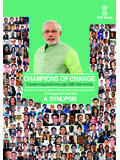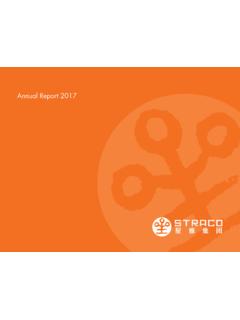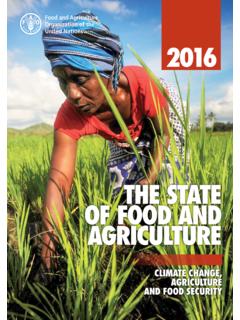Transcription of C K Y M OUNT O AIN NS TI U T E INDIA LEAPS AHEAD
1 INDIA LEAPS AHEAD : TRANSFORMATIVE MOBILITY SOLUTIONS FOR ALL ROCKY MOUNTAIN INSTITUTEM AY 20 172 | INDIA LEAPS AHEAD : TRANSFORMATIVE MOBILITY SOLUTIONS FOR ALLAUTHORS & ACKNOWLEDGMENTS SU G G ES TED C ITATI O NNITI Aayog and Rocky Mountain Institute. INDIA LEAPS AHEAD : Transformative mobility solutions for all. 2017 . authors would like to thank the following individuals for their Ansari, Albright Stonebridge Group Amit Bhardwag, NITI AayogManuel Esquivel, Independent ConsultantJules Kortenhorst, Rocky Mountain InstituteAmory Lovins, Rocky Mountain InstituteRobert McIntosh, Rocky Mountain InstituteJesse Morris, Rocky Mountain InstituteGreg Rucks, Rocky Mountain InstituteAnand Shah, Albright Stonebridge GroupSamhita Shiledar, Independent ConsultantVindhya Tripathi, BTC ProductionsJonathan Walker, Rocky Mountain InstituteJeruld Weiland, Rocky Mountain InstituteSupporters.
2 The authors would also like to thank ClimateWorks Foundation, the Grantham Foundation for the Protection of the Environment, George Krumme, and Wiancko Charitable Foundation for their generous support that made this report Aayog:Shikha JuyalDr. Manoj Singh Shashvat SinghSarbojit PalRocky Mountain Institute:Marshall AbramczykAman ChitkaraRyan LaemelJames NewcombClay Stranger * Authors listed alphabeticallyArt Director: Romy Purshouse Designer: Michelle FoxDesigner: Laine NicklEditorial Director: Cindie BakerEditor: David Labrador Marketing Manager: Todd ZeranskiCO NTAC TSFor more information, please contact: Shikha Juyal, Stranger, views and opinions expressed in this document are those of the authors and do not necessarily reflect the positions of the institutions or governments.
3 The specific solutions listed in chapter five were generated by a group of 75 stakeholders during the NITI Aayog and RMI Transformative Mobility Solutions Charrette in New Delhi in February 2017 . While every effort has been made to verify the data and information contained in this report, any mistakes or omissions are attributed solely to the authors and not to the organizations they represent. 3 | INDIA LEAPS AHEAD : TRANSFORMATIVE MOBILITY SOLUTIONS FOR ALLWith rapidly evolving technologies and business models, there is need to adopt new and fundamentally different pathways to provide clean, cost-effective, and efficient mobility services that are safe, create new jobs, reduce dependence on oil imports, and achieve more efficient land-use in cities with the least environmental footprints and impacts on human health.
4 A rapidly developing INDIA is at the cusp of making such a transition to new mobility help draw up strategies to enable making this transition with the collective wisdom of a multitude of stakeholders, RMI and NITI Aayog took on the ambitious assignment of organizing a first of its kind charrette dialogue process in February 2017 . This document summarizes the key actionable solutions merging out of the charrette process that can enable INDIA to make this is evident from the strategies put forward in this outcome document, INDIA is uniquely positioned to take advantage of developments due to a set of advantageous conditions and capabilities. The main elements for INDIA s mobility transformation are system integration, shared infrastructure development, and scaled manufacturing.
5 There is need to capture economically-viable opportunities at a national scale and demonstrate emerging opportunities at a state level to speed the deployment and integration of ideas put forward in this document should provide basis for engaging discussions and dialogues, and for helping INDIA collectively march towards a sustainable mobility pathway. Dr. Arvind Panagariya, Vice Chairman, NITI Aayog MESSAGE FROM DR. ARVIND PANAGARIYA4 | INDIA LEAPS AHEAD : TRANSFORMATIVE MOBILITY SOLUTIONS FOR ALLMESSAGE FROM DR. AMORY LOVINS General, later President, Eisenhower advised us to make tough problems soluble not by chopping them into smaller pieces but by expanding their boundaries to encompass what the solution requires.
6 Thus it s easier to solve the mobility and electricity problems together than separately. INDIA , by enlarging and integrating its vision of personal mobility, can leverage its many strengths a diverse set of mode options, strong IT capabilities, ambitious renewable energy targets. Bold adoption can thereby deliver access, save money, clean the air, reduce congestion, save lives, improve urban and rural life, increase equity, and displace oil. It can protect the climate, strengthen national security, speed the shift from coal to renewable electricity, move from energy deficit towards long-term surplus, and empower the whole economy. To those ends, leaders of INDIA s government, private sector, and civil society came together in 2017 in an innovative workshop, drawing on best practices from around the world.
7 This report of their recommendations for envisioning and working towards a shared, electric, and connected mobility future launches an exciting journey to transform the mobility of all Indian citizens. My colleagues and I are honoured by this opportunity and confident INDIA s achievements will lead and amaze the world. Dr. Amory Lovins, Cofounder and Chief Scientist, RMI ROCKY MOUNTAIN INSTITUTE5 | INDIA LEAPS AHEAD : TRANSFORMATIVE MOBILITY SOLUTIONS FOR ALLTABLE OF CONTENTSE xecutive summary ..701: Introduction ..1602: Summary of charrette process ..2003: Vision and : Three-phased approach to change ..3505: Actionable solutions ..4506: Impact of the transformation.
8 9607: Conclusion: A change model to scale solutions rapidly ..108 Glossary ..118 Appendix ..121 Endnotes ..132 EXECUTIVE SUMMARYES7 | INDIA LEAPS AHEAD : TRANSFORMATIVE MOBILITY SOLUTIONS FOR ALLA whole-system approach to mobility transformationES: EXECUTIVE SUMMARYE lements of INDIA s mobility transformationSystem integration Assembling the pieces1. Mobility as a Service2. Interoperable transport data Shared infrastructure developmentScaled manufacturing Building the ecosystem3. Mobility-oriented development4. Vehicle-grid integration Creating the supply5. Product manufacturing6. Electric vehicle deploymentSharedElectricConnectedOPPORTU NITY AREASNEW MOBILITY PARADIGM8 | INDIA LEAPS AHEAD : TRANSFORMATIVE MOBILITY SOLUTIONS FOR ALLI ndia can save 64% of anticipated passenger road-based mobility-related energy demand and 37% of carbon emissions in 2030 by pursuing a shared, electric, and connected mobility future.
9 This would result in a reduction of 156 Mtoe in diesel and petrol consumption for that year. At USD 52/bbl of crude, this would imply a net savings of roughly Rs lakh crore (approximately 60 billion USD) in 2030. This reduction in energy consumption results from a synergistic impact of improvements in: Systems integration: Enabling wide-scale adoption of mobility solutions through ubiquitous availability and sharing of interoperable transport data (ITD). Scaled manufacturing: Facilitating market creation through policies and mechanisms that enable manufacturing of electric vehicles (EVs) and necessary components in successive segments based on their market readiness.
10 Shared infrastructure development: Better urban design, where a larger fraction of mobility demand is met by nonmotorized transit and public transit, and access to vehicle-charging infrastructure enables higher penetration of addition to reducing energy demand, this transformation yields other benefits, including lower congestion as shared, public, and nonmotorized modes of transportation serve an increasing share of mobility demand. With a larger share of the fleet running on electricity, it leads to lower local emissions, improving public health. This has significant implications for INDIA s electricity sector and economy, supporting INDIA s ambitious renewable energy goals while saving money, providing jobs, and strengthening Indian : EXECUTIVE SUMMARYM aking INDIA s passenger mobility shared, electric, and connected can cut its energy demand by 64% and carbon emissions by 37%FIGURES ES-1 - ES-2: MODELED ENERGY REQUIREMENT FOR PASSENGER MOBILITY (LEFT) AND RESULTANT CO2 EMISSIONS (RIGHT) FOR BUSINESS-AS-USUAL (BAU) AND TRANSFORMATIVE SCENARIOS, 2015 2030* Data presented on this slide are based on RMI s modeling of a medium-growth scenario.













